bearded dragon selective breeding is one of the biggest influences in today’s reptile pet industry. This process involves intentionally pairing dragons to highlight specific traits such as bold colors, unique patterns, and distinct scale textures. Thanks to bearded dragon selective breeding, a wide variety of morphs have emerged—each offering something visually different from their wild ancestors.
At its core, bearded dragon selective breeding enhances features like pigmentation, scaleless skin, and even translucent appearances. While these traits look impressive, they also raise important health considerations for responsible owners.
In this article, we’ll explore five of the most popular morphs produced through bearded dragon selective breeding and break down their genetics, care needs, and potential risks.
Introduction to Bearded Dragon Morphs and Genetic Variation
What Are Morphs in Bearded Dragons?
In the world of reptiles, morphs refer to inherited genetic variations that influence an animal’s appearance—especially traits like color, scale texture, and pattern. While morphs don’t alter the species itself, they dramatically change how that species looks. In bearded dragons, these unique visual traits are the result of selective breeding practices designed to highlight specific genes.
Through bearded dragon selective breeding, breeders intentionally pair dragons that exhibit certain features—such as intense red coloration, smooth scales, or translucent skin. Over successive generations, these traits become more pronounced and consistent, giving rise to recognizable morphs like Leatherback, Silkback, Zero, or Witblits.
Some morphs are subtle, while others look completely different from their wild-type ancestors. But all are the result of human-guided genetics. Today, morphs play a major role in the popularity of bearded dragons as pets—offering enthusiasts a wide range of colors and textures that go far beyond what’s found in nature.
How Genetic Traits Influence Bearded Dragon Morphs
A bearded dragon’s physical traits—like skin color, pattern intensity, scale texture, and even nail clarity—are determined by genetics. While diet and habitat can affect a dragon’s overall health, its visual appearance is largely inherited. Through bearded dragon selective breeding, these genetic traits can be amplified, combined, or even intentionally suppressed over generations.
For example, the Translucent morph owes its glassy appearance and clear nails to a gene that reduces melanin levels. The Leatherback morph, on the other hand, comes from a gene that affects scale development—resulting in smoother, less spiky skin. By understanding the genetic foundation behind each trait, breeders can strategically produce offspring with highly specific features.
But it’s not all about looks. Some genetic traits are linked to health outcomes—such as sensitivity to UVB light or difficulties with shedding. That’s why ethical bearded dragon selective breeding requires knowledge, precision, and a commitment to producing dragons that are not only beautiful, but also genetically sound.
The Rise of Bearded Dragon Morph Breeding Trends
In recent years, bearded dragon selective breeding has reshaped the reptile pet industry, giving rise to an explosion of vibrant morphs that captivate hobbyists around the world. What began with standard wild-type dragons—typically uniform in color and rugged in texture—has evolved into a marketplace filled with dazzling morphs, each carrying a distinct look, rarity level, and price tag.
The rise of social media, reptile expos, and online breeding communities has only fueled this trend. Morphs such as Hypo, Zero, and Silkback are now highly sought after for their bold traits and exotic appearance. With growing demand, many breeders have narrowed their focus to producing dragons with specific visual features, often emphasizing aesthetics over genetic diversity.
However, this rapid shift has sparked concerns about animal welfare. Over-selective breeding can lead to health complications, weakened immune systems, and ethical dilemmas. As consumers become more educated, it’s essential to understand how this trend impacts the long-term well-being of these animals—and to choose breeders who balance beauty with responsibility.
Understanding bearded dragon selective breeding Techniques
Selective Breeding for Color vs. Health in Bearded Dragons
Bearded dragon selective breeding has unlocked a stunning variety of colors and patterns—but not without serious trade-offs. Breeders often aim to produce dragons with striking features like blood-red tones or pure-white, patternless Zero morphs. While visually impressive and highly profitable, these traits sometimes come at the cost of the animal’s genetic health.
When breeding decisions are based solely on appearance, genetic diversity narrows. This increases the risk of inherited problems, including weakened immune systems, skeletal deformities, and skin vulnerabilities. Take Silkbacks, for example: although beautiful, they completely lack protective scales, making them more prone to injury, shedding difficulties, and infections.
This widening gap between appearance and well-being raises a vital ethical question: Are we prioritizing looks over life? Responsible breeders aim for balance—selecting for beauty while safeguarding long-term health. For reptile owners, it’s crucial to look beyond color alone and ask whether a dragon has the genetic strength to thrive.
Ethical Questions Around bearded dragon selective breeding
As the popularity of exotic reptile morphs continues to rise, so do the ethical concerns surrounding bearded dragon selective breeding. While producing visually stunning dragons has become a trend, it raises an important question: Are we prioritizing appearance at the expense of the animal’s well-being?
Some morphs—like the Silkback—are bred to be completely scale-less, making them look sleek and unique. However, this lack of natural protection also makes them more susceptible to injury, dehydration, and infection. When breeders focus only on aesthetic appeal without considering the dragon’s health, the practice can become ethically questionable, if not outright harmful.
Responsible breeders take a different approach. They aim to balance beauty with welfare, avoiding extreme traits that may lead to suffering. They also steer clear of excessive inbreeding, which can cause long-term genetic issues. As reptile keepers and buyers, supporting ethical bearded dragon selective breeding means choosing breeders who value animal health just as much as appearance—and ensuring that beauty never comes at a cruel cost.
Role of Reptile Breeders and Captive Lines
At the heart of bearded dragon selective breeding are the breeders themselves—individuals and facilities responsible for shaping the future of the species in captivity. These breeders manage what are known as “captive lines”—controlled bloodlines selectively bred to emphasize specific traits like vibrant color, smooth scales, or translucent features.
But producing beautiful morphs is only part of the job. Ethical breeders also focus on health, temperament, and genetic integrity. They carefully monitor lineage records to prevent inbreeding, avoid pairing dragons with known health issues, and strive to maintain strong, stable bloodlines. A translucent dragon with striking blue hues or a Leatherback with a silky scale texture doesn’t happen by accident—it’s the result of thoughtful, multi-generational planning.
When managed responsibly, captive lines promote both visual appeal and genetic diversity. But in the hands of profit-driven breeders, these same lines can become bottlenecks, leading to fragile offspring and hereditary defects. That’s why it’s vital for prospective owners to understand the background of their dragon—and to choose breeders who prioritize both aesthetics and animal welfare in their selective breeding programs.
Top 5 Bearded Dragon Morphs from Selective Breeding
Leatherback Morph – A Smooth Result of Selective Breeding
One of the most recognized outcomes of bearded dragon selective breeding is the Leatherback morph. This variation is defined by its reduced scale texture, giving the dragon a smoother, more vibrant appearance. Without the typical spiky scales found on wild-type dragons, the Leatherback’s colors—especially red, orange, and citrus—tend to appear more saturated and bold.
Leatherbacks are often favored by keepers who want a morph that’s both striking and relatively hardy. They retain the same behavior and care needs as standard dragons but offer a unique tactile feel and visual flair. Breeders have used Leatherbacks as a foundation for producing even more exotic combinations, such as Trans-Leatherbacks or Hypo-Leatherbacks, making this morph a cornerstone of modern breeding programs.
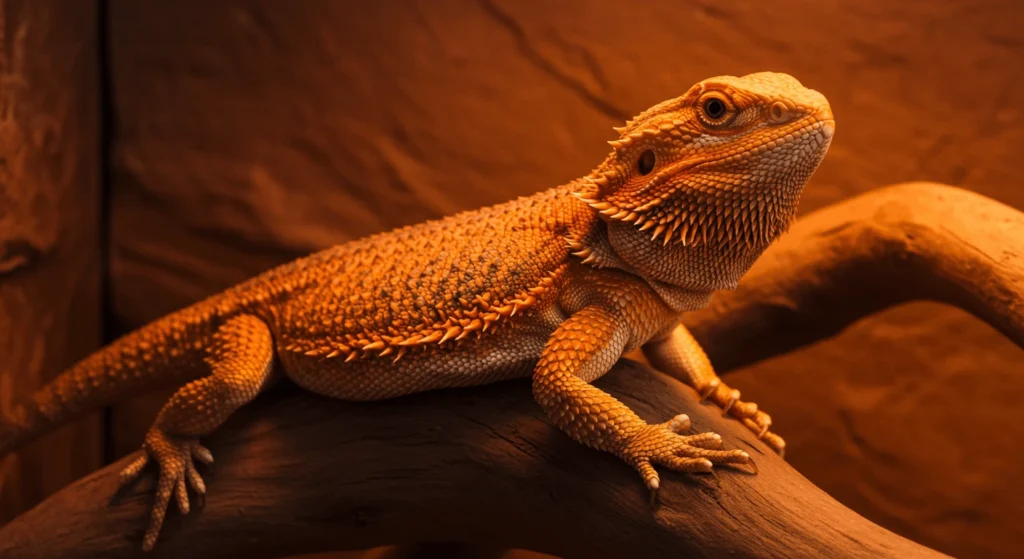
Zero Morph – Patternless Beauty from Controlled Breeding
The Zero morph is among the most dramatic results of bearded dragon selective breeding. These dragons are completely patternless and display a pale, almost ghostly white or silver hue. Unlike albino animals, Zeros still produce some pigmentation, but they lack the typical striping or pattern seen in most other morphs.
Zeros are prized for their minimalistic beauty. They stand out in any collection and often fetch higher prices due to their rarity and aesthetic. However, some Zeros may be more sensitive to lighting and UVB exposure, so owners need to be attentive to proper husbandry.
This morph exemplifies how selective breeding can create entirely new visual standards within a species. What started as a genetic anomaly has become one of the most sought-after morphs in the reptile world.
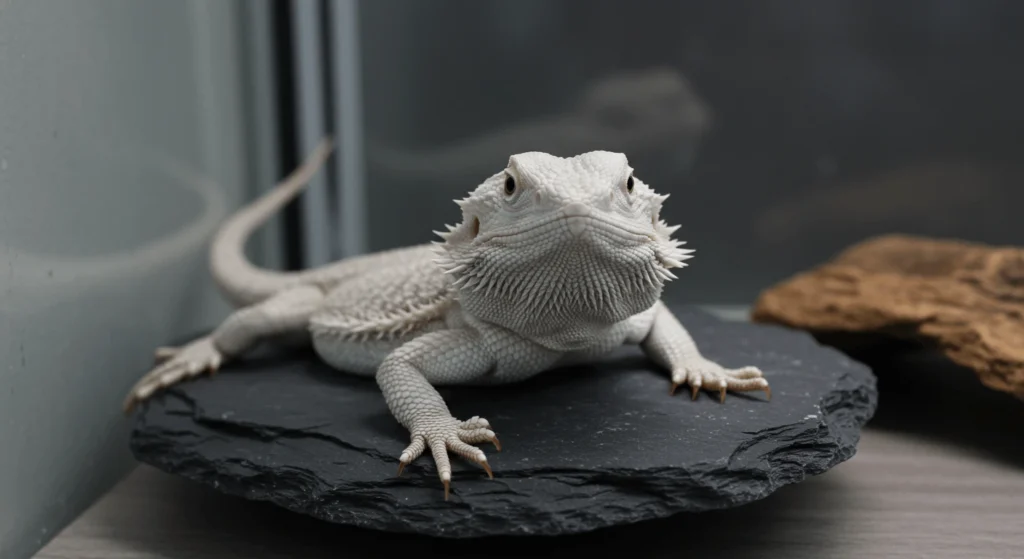
Witblits Morph – Pale Genetics and Breeding Precision
Witblits—Afrikaans for “white lightning”—are another standout product of bearded dragon selective breeding. Similar to Zeros in their lack of pattern, Witblits morphs also exhibit pale coloration but often carry a slightly warmer tone, such as creamy beige, soft yellow, or off-white.
Unlike Zeros, Witblits tend to retain a bit more variation in color, even if their patterns are subdued. This morph was developed through multiple generations of breeding, requiring patience and genetic precision. Today, Witblits dragons are used in combination projects to produce hybrid morphs with subtle but elegant coloration.
Their smooth, clean appearance has made them popular among breeders and hobbyists who prefer a soft, refined aesthetic over bold colors or patterns.
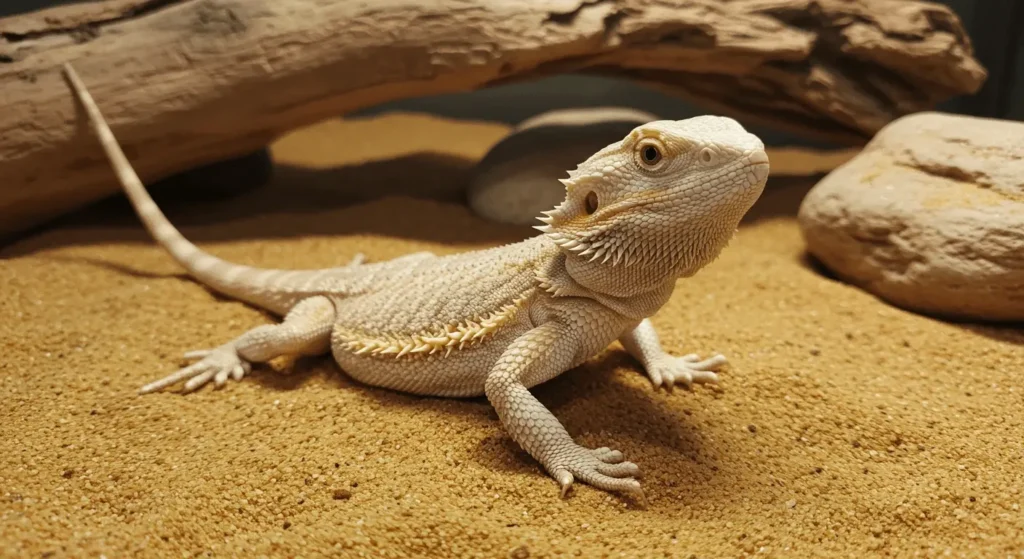
Translucent Morph – A Semi-Transparent Selective Line
The Translucent morph, often shortened to “Trans,” is a visually captivating result of bearded dragon selective breeding. These dragons are known for their clear or dark nails, a slightly see-through skin quality when young, and a bluish tint around the eyes and belly.
Translucent dragons often change slightly as they age, with their blue tint fading and skin becoming more opaque over time. Still, their unusual early appearance draws attention from reptile enthusiasts worldwide. The clear nails remain a lifelong identifier.
Breeders often combine the translucent trait with others—like Leatherback or Hypo—to create even more distinct morphs. However, Trans dragons can sometimes be more sensitive in early development, so proper care is crucial during their juvenile stage.
Selective breeding may enhance appearance—but it can also reduce genetic resilience.
Discover common health issues caused by bearded dragon morph breeding.
Silkback Morph – Extreme Expression of Breeding for Texture
Perhaps the most controversial and delicate morph resulting from bearded dragon selective breeding is the Silkback. As the name suggests, these dragons completely lack scales, leaving their skin smooth, shiny, and almost amphibian-like in texture.
Visually, Silkbacks are breathtaking. Their colors are often the most vibrant of all morphs, as there are no scales to diffuse pigmentation. However, this beauty comes at a cost. Silkbacks are incredibly fragile. Without scales, they are prone to skin damage, dehydration, and difficulty shedding. They require special care, including regular moisturizing and ultra-soft substrates.
Because of these challenges, Silkbacks are recommended only for experienced reptile keepers. They highlight the ethical conversation surrounding breeding practices, reminding us that just because something is visually impressive doesn’t always mean it’s in the animal’s best interest.
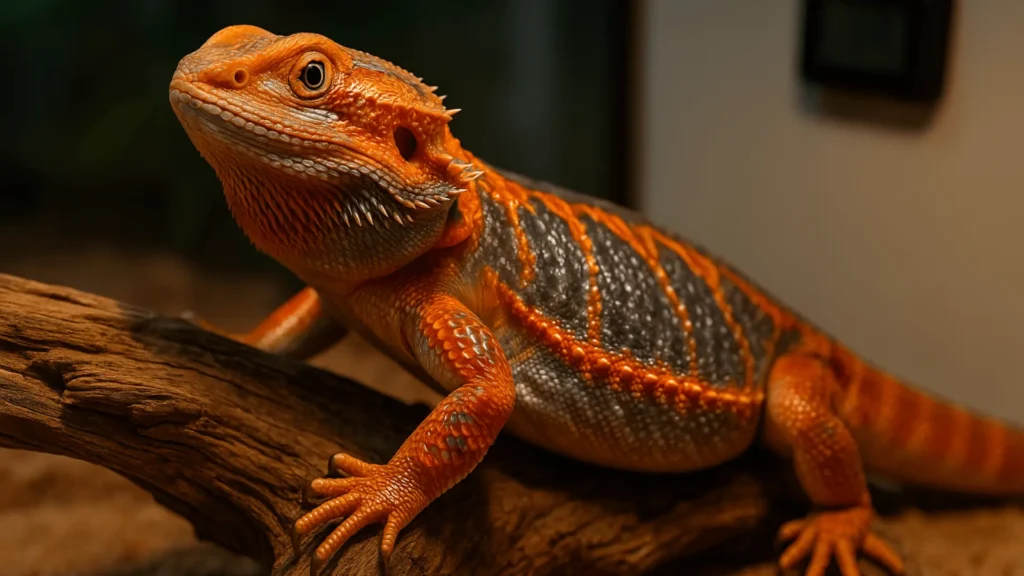
Health Concerns Linked to Selective Breeding in Bearded Dragons
Shedding Issues and Skin Sensitivity
Many designer morphs, especially Silkbacks and Leatherbacks, experience abnormal or problematic shedding. These issues stem from modified scale structures, which can interfere with how old skin naturally sloughs off. In Silkbacks—who lack protective scales entirely—skin becomes overly sensitive, making even minor abrasions dangerous.
Improper sheds can lead to retained skin around the eyes, toes, and tail, which may cut off circulation and cause long-term damage or infection. Morphs with altered skin texture are also more susceptible to environmental stressors such as overly dry air or rough substrates.
For these dragons, regular misting, warm baths, and precise humidity control aren’t optional—they’re essential. Owners need to be extra attentive during shedding cycles and avoid decor that might irritate or damage fragile skin. While the visual beauty of these morphs is undeniable, it often comes with a lifelong commitment to specialized skin care.
Bone Health and UVB Absorption Concerns
Designer morphs often face unique challenges when it comes to calcium metabolism and bone strength. While not all morphs are affected, some—especially Silkbacks and Translucents—may have trouble synthesizing vitamin D3 due to their altered skin or reduced exposure to natural UVB lighting.
Without proper UVB absorption, dragons can’t metabolize calcium efficiently, leading to metabolic bone disease (MBD). This condition causes soft or deformed bones, tremors, and in severe cases, paralysis or death.
New morph owners must understand the vital role of UVB lighting. High-quality full-spectrum bulbs, proper basking zones, and calcium supplementation are non-negotiable. It’s also wise to monitor juveniles closely, as their bones develop rapidly and deficiencies can become permanent within weeks.
Selective breeding has advanced aesthetics—but sometimes at the cost of physiological resilience. Recognizing these risks helps keep your dragon strong and mobile for years to come.
Immune System Weakness in Certain Lines
Another concern tied to the rise of exotic morphs is a potential decrease in immune system robustness. In pursuit of rare traits, breeders sometimes narrow the gene pool, unintentionally selecting for dragons that look amazing but lack genetic diversity needed for natural resistance.
Dragons from weakened bloodlines may be more prone to infections, respiratory issues, or internal parasites. Stressful conditions—like moving to a new home or improper temperatures—can trigger illness faster in these morphs than in their wild-type counterparts.
Some morphs, like Translucents, have been observed to exhibit slower recovery rates from common illnesses or infections. While more research is needed, anecdotal evidence among breeders suggests immune fragility may be an emerging trend in highly modified lines.
That doesn’t mean morphs are inherently unhealthy—it means they need proactive, high-quality care. Regular vet checkups, proper enclosure hygiene, and a balanced diet go a long way in building a strong immune defense.
Inbreeding Risks and Genetic Narrowing in Dragons
Selective breeding often walks a fine line between innovation and genetic bottlenecking. To achieve rare traits, breeders may use a limited pool of dragons, repeatedly pairing those with the desired genes. Over time, this process can reduce genetic variability—leading to inherited defects and inbreeding complications.
Some of these complications include kinked tails, deformed limbs, shortened lifespans, or even infertility. In extreme cases, entire morph lines may be compromised, requiring outcrossing with unrelated dragons to restore health and viability.
Inbreeding depression is a known risk in all captive breeding programs—but it becomes more likely when appearance is prioritized over health. Responsible breeders actively track lineage and introduce fresh genetics when needed. Sadly, not all sellers follow such practices, especially when high-profit morphs are involved.
This is why it’s critical to research where your dragon comes from. Ask for lineage records, health guarantees, and even past breeding data. Transparency from breeders is your best protection against the hidden costs of genetic shortcuts.
How to Responsibly Care for Selectively Bred Bearded Dragons
Choosing a Responsible Bearded Dragon Breeder
Choosing the right breeder is one of the most important decisions when buying a bearded dragon morph. A reputable breeder prioritizes the health, genetics, and welfare of their animals—not just their appearance. Look for breeders who are transparent about lineage, provide clean and safe enclosures, and can answer detailed questions about care.
Ask for health guarantees and evidence of vet checks. Avoid sellers who can’t explain how the morph was produced or rush the sale. Reviews and recommendations from experienced reptile keepers or online forums can also help steer you in the right direction.
Responsible breeders will often limit the number of pairings per year to prevent overbreeding. They’ll also give you care sheets and support after the sale. When it comes to designer morphs, a trustworthy source is essential for getting a healthy, long-lived dragon.
Setting Up a Morph-Safe Terrarium
Morphs like Silkbacks and Translucents may need slightly different enclosures compared to standard bearded dragons. The terrarium must offer stable temperatures, low-risk substrates, and soft, smooth décor to protect sensitive skin. Avoid rough branches, hard rocks, or anything that could cause abrasions.
Maintain basking areas around 95–105°F and use a high-quality UVB bulb to support bone development. Humidity should be kept moderate, between 30%–40%, unless dealing with a dragon that has specific needs, like aiding a difficult shed.
Flooring is another key factor. For fragile morphs, skip loose substrates like sand or bark. Instead, go with reptile carpet, non-adhesive shelf liner, or tile to minimize risk. A morph-safe terrarium means more than just looking pretty—it’s a habitat built for longevity and health.
Special Care Needs for Fragile Morphs (e.g., Silkbacks)
Some morphs, particularly Silkbacks, need highly specialized care. Without scales, their skin is prone to tearing, infection, and dehydration. Unlike standard dragons, Silkbacks should not be housed on rough or loose substrate and should be handled very gently and infrequently.
Frequent hydration is critical. Misting the dragon daily and offering regular shallow baths can help maintain skin moisture and prevent shedding issues. You may also need to use a reptile-safe moisturizer or aloe-based gel after consulting a vet.
UVB lighting and calcium remain essential but must be paired with careful monitoring for any signs of stress or irritation. Even decor should be reviewed—anything abrasive must go. These dragons are beautiful, but they require owners who are willing to go the extra mile. Without proper attention, Silkbacks can suffer greatly despite their stunning appearance.
Diet, Lighting, and Supplements for Long-Term Health
A balanced diet and proper lighting are foundational for all morphs, but they’re especially important for selectively bred bearded dragons. Many morphs—due to genetic tweaks—may be more sensitive to deficiencies in calcium, vitamin D3, or hydration.
Feed a mix of gut-loaded insects (like dubia roaches or crickets) and fresh greens daily. Offer calcium with D3 at least 3–4 times a week, and multivitamin supplements once weekly. Younger morphs often need higher frequency than adults.
Use a full-spectrum UVB bulb that covers at least 50–70% of the enclosure. Replace it every 6 months, even if it still looks functional. Without strong UVB exposure, dragons can’t metabolize nutrients correctly—especially high-risk morphs like Translucents and Silkbacks.
Proper husbandry can offset many of the vulnerabilities caused by selective breeding. When diet, light, and supplements are managed well, even delicate morphs can live long, vibrant lives.
Frequently Asked Questions (FAQ)
What is bearded dragon selective breeding?
Bearded dragon selective breeding is the intentional process of mating dragons with specific traits—such as color, scale texture, or pattern—to produce offspring that emphasize those features. This practice has led to the creation of stunning morphs like the Leatherback, Zero, and Silkback. While it allows for unique physical traits, it must be done responsibly to avoid health issues caused by inbreeding or poor genetics.
Are certain morphs more fragile than others?
Yes, morphs like Silkbacks and Translucents tend to be more fragile than standard dragons. Silkbacks, in particular, lack protective scales and need specialized skin care. These morphs often require more attentive husbandry, including careful handling, proper UVB lighting, and optimized terrarium setups.
What is a bearded dragon morph calculator?
A bearded dragon morph calculator is a genetic tool used by breeders to predict the possible outcomes of breeding two dragons with specific traits. It helps identify what morphs may appear in the clutch and whether certain recessive or dominant genes will be passed on. While not 100% accurate, it’s a useful guide for planning breeding projects.
What’s the difference between a Hypo bearded dragon and a normal one?
A Hypo (short for hypomelanistic) bearded dragon has reduced melanin, giving it a lighter, often pastel appearance. Hypo dragons also have clear or light-colored nails, which is a key identifying trait. Normal dragons, by contrast, have darker pigmentation and more typical patterning.
Is there a bearded dragon selective breeding chart available?
Yes, breeders often use selective breeding charts to track genetic traits, morph pairings, and potential outcomes. These charts help maintain healthy lineage records and avoid inbreeding. While official standardized charts are rare, many breeders on platforms like Reddit or reptile forums share DIY versions for reference.
What is a Genetic Stripe bearded dragon?
A Genetic Stripe morph features a distinct longitudinal stripe down its back, resulting from a heritable genetic mutation. It’s a rarer morph that can be combined with other traits like Hypo or Trans to create visually striking combinations. This morph is an example of how selective breeding can enhance very specific physical features.
What is a Paradox bearded dragon?
Paradox bearded dragons are unique in that they show random patches of unusual color that don’t follow the expected morph pattern. These unexpected markings are caused by genetic anomalies and are not fully understood. Because of their rarity and unpredictability, Paradox dragons are highly valued by collectors.
Where can I learn more about bearded dragon selective breeding?
Communities like Bearded Dragon Selective Breeding Reddit are great places to learn from real breeders and owners. You can also explore breeder websites, YouTube channels, and use tools like a bearded dragon breeding chart or morph calculator to deepen your understanding.
Conclusion
Bearded dragon selective breeding has opened the door to a fascinating world of morphs—each with its own beauty, genetics, and care needs. From the smooth Leatherback to the striking Zero, these designer dragons are a testament to what careful breeding can achieve. But with great variety comes responsibility. Understanding the risks, knowing your breeder, and providing proper care ensures your morph thrives not just in looks, but in long-term health. Whether you’re a first-time owner or a reptile enthusiast, always choose with knowledge—and compassion.

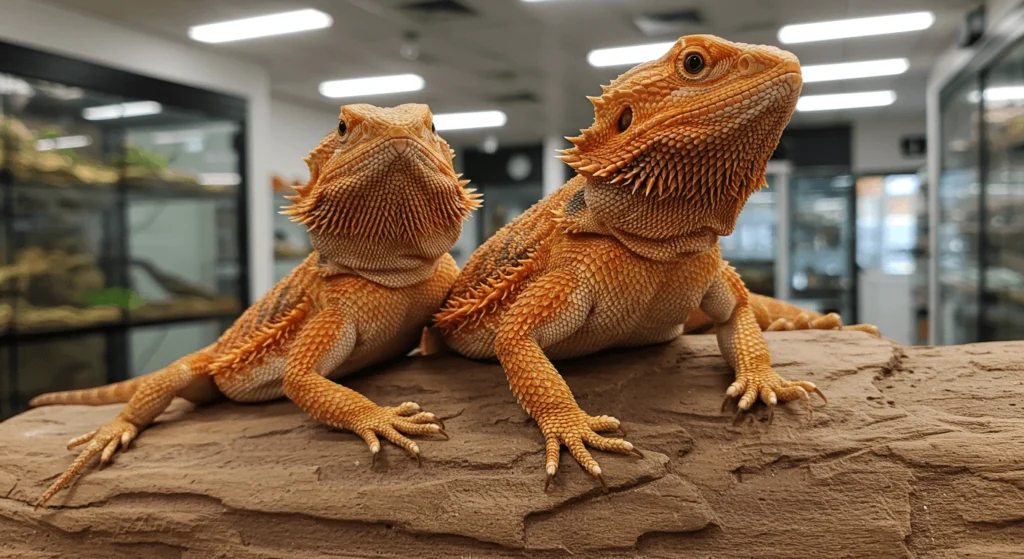
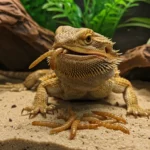
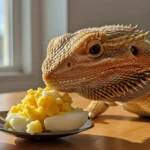
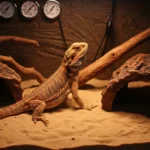
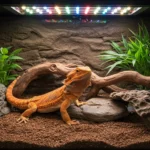
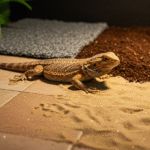
4 thoughts on “Top 5 Morphs from bearded dragon selective breeding”